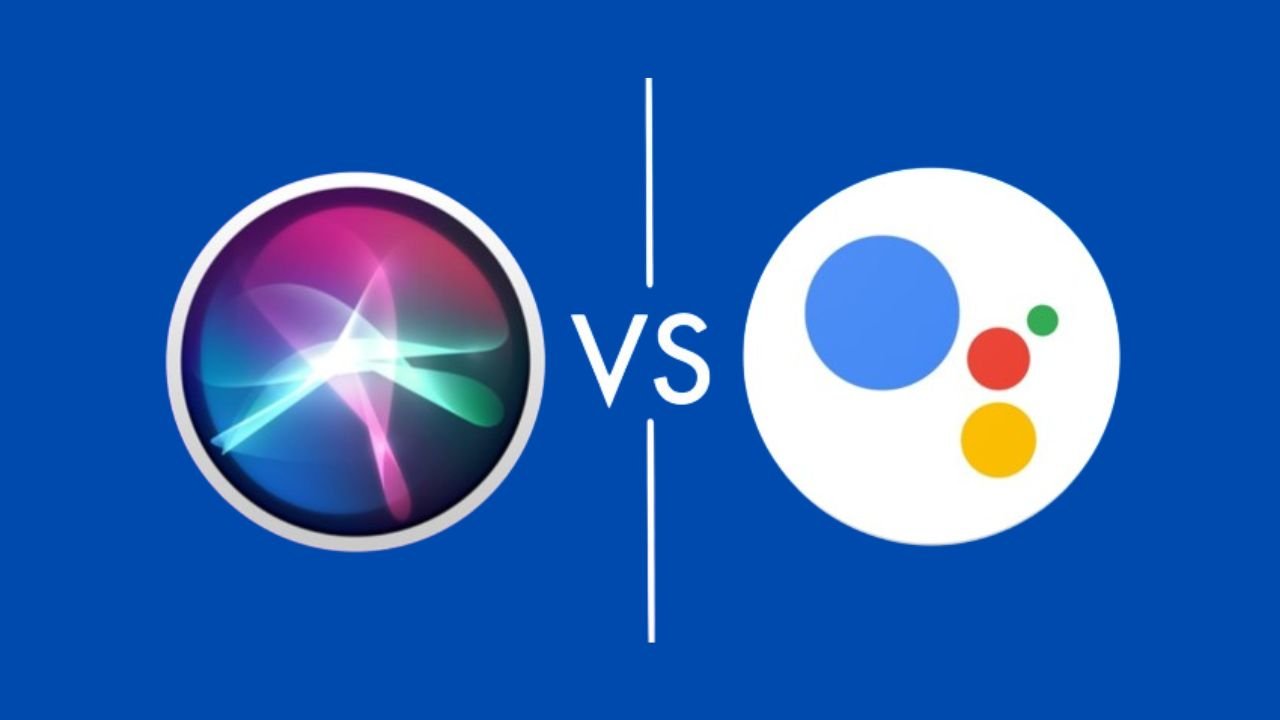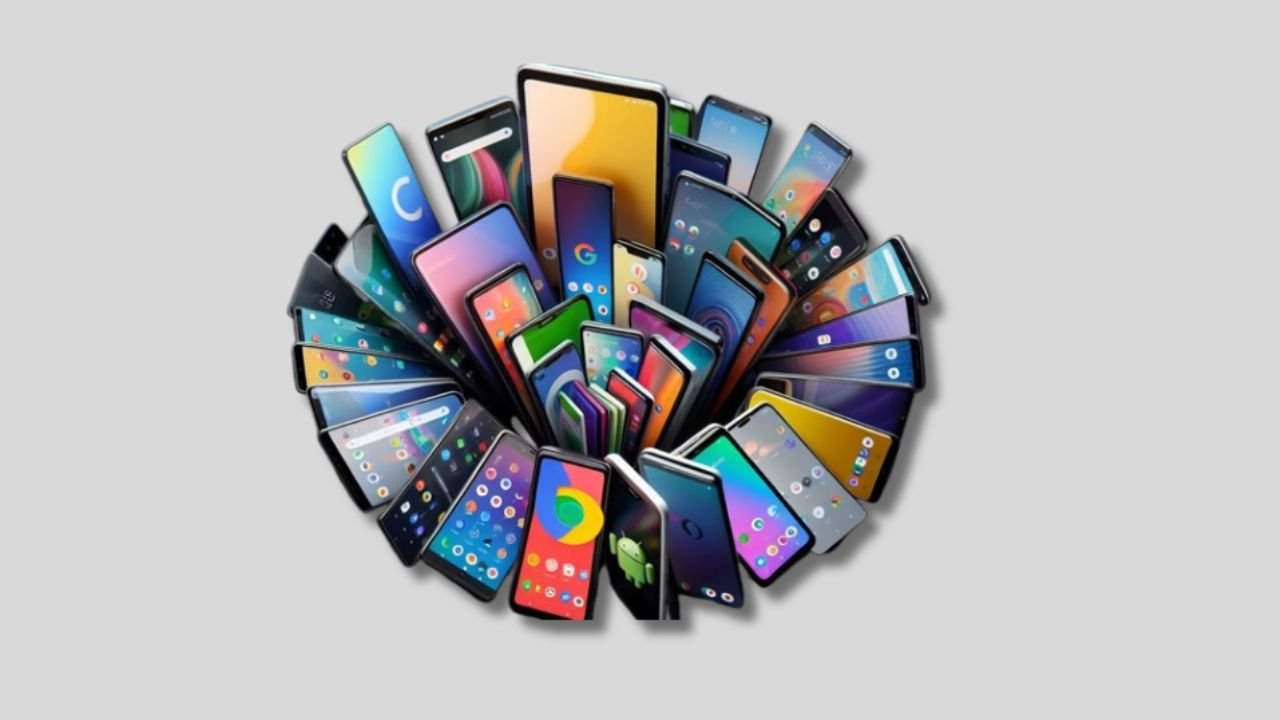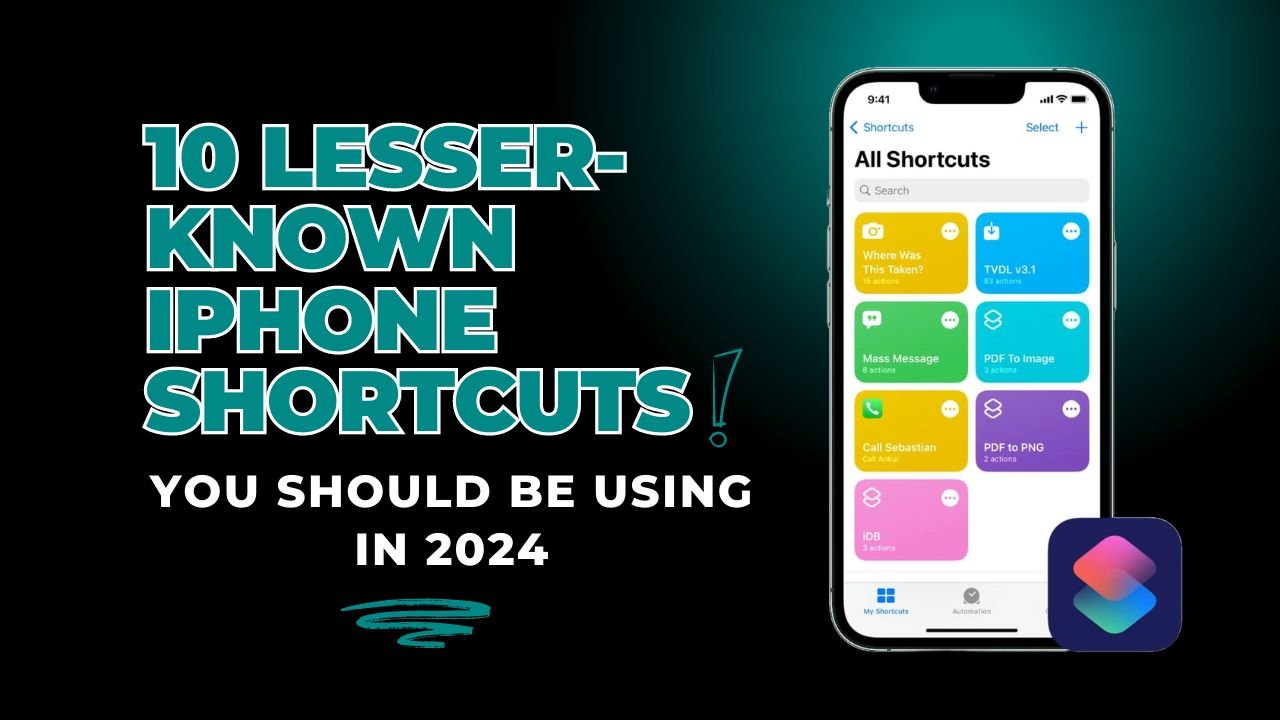Siri vs Google Assistant: Which AI Personal Assistant Reigns Supreme in 2024?
- Evolution of Virtual Assistants
- User Interface and Interaction
- AI Capabilities and Smart Features
- Privacy and Data Security
- Integration and Ecosystem Support
- Future Prospects and Innovations
- The competition between Siri vs Google Assistant
- Amazon Products to Enhance Your AI Personal Assistant Experience
- Conclusion - Siri vs Google Assistant
In the ever-evolving landscape of artificial intelligence, Siri and Google Assistant are constantly at the forefront of innovation. These virtual assistants have revolutionized the way we manage our daily tasks, bringing unparalleled convenience to our fingertips. As we dive into 2024, the burning question remains: which AI personal assistant reigns supreme? With rapid advancements in technology, both Siri and Google Assistant offer some impressive new features that promise to make our lives even easier. Stick around as we compare their strengths, weaknesses, and everything in between to help you decide which AI assistant is truly the best.
Evolution of Virtual Assistants
Virtual assistants have come a long way since the early days of simplistic functionalities. Let’s take a journey down memory lane, exploring the transformation of these digital aides into the powerful entities they are today.
01. Early Virtual Assistants
In the nascent stages of virtual assistants, we encountered characters like Clippy, Microsoft’s animated paperclip helper, and the rudimentary versions of Siri that laid the groundwork for what was to come. These early virtual assistants, albeit charming in their simplicity, were limited in their capabilities, offering basic support and information.
02. Advancements Leading to 2024
The road to 2024 has been paved with remarkable advancements in AI technology. From the integration of natural language processing to the utilization of machine learning algorithms, Siri and Google Assistant have evolved into sophisticated personal assistants capable of understanding complex commands, learning user preferences, and adapting to individual needs. Milestones such as voice recognition improvements, contextual understanding, and enhanced predictive capabilities have elevated these virtual assistants to new heights.
In the quest for dominance, Siri and Google Assistant have continuously pushed the boundaries of innovation, incorporating cutting-edge technologies to deliver seamless user experiences. As we stand on the cusp of 2024, it’s fascinating to witness how these AI marvels have transcended mere utility to become integral parts of our daily lives, reshaping the way we interact with technology and the world around us. The evolution of virtual assistants is a testament to the boundless possibilities of AI, transforming mere machines into indispensable companions on our digital journeys.
User Interface and Interaction
When it comes to engaging with artificial intelligence, the user interface and interaction play pivotal roles in the overall experience. Siri and Google Assistant have set high standards, each offering a unique approach to how users interact with their digital aides. Let’s explore these differences and see which AI personal assistant stands out in 2024.
01. User Experience with Siri
Siri, Apple’s renowned virtual assistant, is famous for its sleek, user-friendly interface. The Siri user experience is marked by impressive voice recognition accuracy, steady response times, and exceptional overall usability.
- Voice Recognition Accuracy: Siri has made significant strides in accurately capturing and understanding verbal commands. Whether you speak with a heavy accent or in colloquial terms, Siri’s advanced natural language processing capabilities ensure your commands are interpreted clearly.
- Response Time: Siri’s response time is swift, often providing answers or performing tasks within moments. This immediacy is vital for users who rely on quick answers and efficiency in their daily routines.
- Overall Usability: Siri boasts an intuitive interface that is easy to navigate, even for tech novices. Its seamless integration with Apple’s iOS makes it extremely user-friendly, allowing users to perform tasks through simple voice commands. Unique features like Siri Shortcuts enable personalized and automated routines that make everyday tasks even more straightforward.
02. User Experience with Google Assistant
Google Assistant offers a robust user experience rooted in its intuitive interface, keen contextual understanding, and deep integration with the Google ecosystem. These elements combine to create a sophisticated and highly personalized AI assistant.
- Intuitive Interface: Google Assistant is designed with user-friendliness in mind. Its interface is easy to navigate, making interactions smooth and effortless. Users can access a vast array of functions with minimal effort, thanks to clear and concise prompts.
- Contextual Understanding: One of Google Assistant’s standout features is its ability to grasp the context of conversations. It can remember past interactions and provide responses based on previous queries, creating a natural, human-like dialogue. This contextual awareness significantly enhances the user experience, making interactions feel more conversational and meaningful.
- Integration with Google’s Ecosystem: Google Assistant’s seamless integration with Google’s suite of services, such as Calendar, Maps, and Gmail, offers unparalleled convenience. It provides access to a wealth of information and capabilities, making it incredibly versatile. For example, you can ask Google Assistant to schedule appointments, navigate to locations, or read emails, all within the same ecosystem.
In the battle of user interfaces and interaction, both Siri and Google Assistant bring unique strengths to the table. Siri excels in voice recognition and ease of use, while Google Assistant shines with its contextual understanding and integration with a comprehensive ecosystem. Ultimately, the choice between Siri vs Google Assistant depends on what the user values most in their AI companion. As we forge ahead into 2024, these virtual assistants continue to push the boundaries of technology, making our lives easier and more connected.
AI Capabilities and Smart Features
In the dynamic landscape of virtual assistants, Siri and Google Assistant stand out as prime examples of AI excellence, each wielding a unique set of capabilities and smart features that cater to users’ needs in distinctive ways. Let’s explore the intricacies of their AI prowess and the smart features that set them apart.
01. Siri’s AI Capabilities
Siri, Apple’s renowned virtual assistant, showcases a robust set of AI capabilities that streamline daily tasks with effortless precision. It brings personalized suggestions, proactive assistance, and seamless integration with Apple’s ecosystem.
- Personalized Suggestions: Siri shines with its tailored recommendations. It can predict what you might need next based on your preferences and habits. Whether it’s suggesting shortcuts to commonly visited places or playing a specific playlist during your evening workout, Siri anticipates and caters to your needs effectively.
- Proactive Assistance: Siri doesn’t just wait for commands; it takes initiative. It can remind you of your appointments, suggest when to leave for a meeting to avoid traffic, or even recommend recipes based on what’s in your pantry. This proactive approach turns Siri into a helpful partner in your everyday routines.
- Integration with Apple Devices and Services: One of Siri’s standout features is its seamless integration with Apple’s suite of devices and services. Whether you’re using an iPhone, iPad, Mac, or even an Apple Watch, Siri ensures a consistent experience across all platforms. This integration enables features like Handoff, which allows you to start a task on one device and finish it on another without missing a beat.
02. Google Assistant’s Smart Features
Google Assistant, Google’s acclaimed digital aide, is packed with intelligent functionalities designed to enhance user interactions and simplify everyday tasks. Notable features include integration with Google Lens, real-time language translation, and connectivity with Google Search and Maps.
- Google Lens Integration: Google Assistant leverages the power of visual recognition through Google Lens. This feature allows you to point your device’s camera at objects to gain information. Whether identifying a plant, translating text, or finding products online, Google Lens enriches your interaction with the world around you.
- Real-Time Language Translation: Bridging language gaps, Google Assistant excels in real-time translation. It enables you to converse in different languages fluidly, making international communication more accessible. This feature is particularly useful for travelers or anyone engaging with multilingual contexts.
- Seamless Connectivity with Google Search and Maps: Google Assistant integrates effortlessly with Google’s suite of services, like Search and Maps. This connectivity means you can receive instant answers, real-time traffic updates, local business recommendations, and directions without switching between apps. It’s all about making information accessible and actions effortless.
In the ongoing quest to offer the best user experiences, both Siri and Google Assistant exemplify innovation and functionality. By combining their unique AI capabilities and smart features, they continue to push the boundaries of what digital assistants can achieve, adapting to our needs with remarkable intelligence and efficiency.
Privacy and Data Security
In the realm of virtual assistants, safeguarding user privacy and ensuring robust data security measures are paramount considerations. Both Siri and Google Assistant have made significant strides in addressing these concerns, implementing nuanced approaches to protect user information while delivering personalized experiences.
01. Privacy Measures of Siri
Apple has always been firm on making user privacy a priority with Siri. They have incorporated various measures to ensure that user data stays secure:
- Data Encryption: Any interaction you have with Siri is encrypted both when it is being sent and while it is stored. This strong encryption keeps the data safe from unauthorized access.
- User Consent Policies: Siri operates on a principle where you need to give explicit permission for most of the data processing. You decide what features to activate, which in turn affects what data is gathered.
- Zero Unwanted Sharing: Unlike many other services, Siri doesn’t share your data for ad personalization. Apple maintains strict boundaries here, making sure that your information is not exploited for marketing gains.
In essence, Apple’s unwavering stance on user privacy with Siri sets a high benchmark. By embedding privacy considerations right into their design process, Apple ensures all your AI interactions are secure and trustworthy.
02. Data Security of Google Assistant
Google Assistant is known for adopting a thorough approach to data security, balanced with transparency and user awareness:
- Transparency Reports: Google publishes regular reports detailing how user data is managed, giving you insights into their data handling practices.
- Advanced Encryption: Similar to Siri, Google Assistant also employs strong encryption for both data being transmitted and stored. They use cutting-edge cryptographic measures to keep user data secure.
- User Control: Google lets you manage your data through easy-to-use privacy settings. You can access, delete, or turn off data collection according to your preferences, offering a customized privacy experience.
Google continuously updates its security protocols to stay ahead of threats. By adopting a proactive stance, they ensure a secure environment where the risk of data breaches is minimized.
In the world of virtual assistants, privacy and data security are vital to building user trust. Both Siri and Google Assistant have made considerable advancements in this domain, using encryption, transparent practices, and strong user controls to safeguard your information. As we move further into 2024, these measures will remain crucial in establishing reliable and safe AI personal assistants.
Integration and Ecosystem Support
As we immerse ourselves in the world of virtual assistants, the integration prowess and ecosystem support offered by Siri and Google Assistant play defining roles in shaping our digital experiences. Let’s explore the seamless connectivity and compatibility that these AI marvels bring to the table, catering to the diverse needs of tech enthusiasts like yourself.
01. Siri’s Ecosystem Integration
Siri, the stalwart companion embedded within Apple’s ecosystem, offers a harmonious union of intelligence and compatibility. Step into the realm of Siri’s integration with Apple’s fortified domain, and you’ll find a symphony of interconnected services that elevate your tech encounters:
- HomeKit Harmony: Picture a world where your voice commands orchestrate your home environment effortlessly. With Siri’s integration with HomeKit, Apple’s smart home platform, you can control your lights, thermostat, and security systems with a simple verbal cue. Siri transforms your dwelling into a responsive abode, where your voice is the conductor of convenience.
- Apple Music Maestro: Dive into a melodic journey curated by Siri’s seamless integration with Apple Music. Let Siri serenade you with personalized playlists, recommend new tunes based on your preferences, and even act as your musical encyclopedia. Whether you’re unwinding or energizing your day, Siri and Apple Music harmonize to deliver a tailored auditory experience.
- Apple Services Synergy: Traverse the digital landscape with ease as Siri navigates through various Apple services like Maps, Calendar, and Reminders. Seamlessly set appointments, get directions, and stay organized with Siri’s intuitive coordination across the Apple ecosystem. Every interaction with Siri unfolds a tapestry of interconnected services, painting a picture of technological synergy.
02. Google Assistant’s Device Compatibility
Venture into the expansive realm of Google Assistant’s cross-platform prowess and witness a world where compatibility knows no bounds. Google Assistant’s adaptability transcends devices and services, creating a web of connectivity that empowers tech aficionados with unparalleled flexibility:
- Diverse Device Compatibility: Explore a universe where Google Assistant seamlessly integrates with a myriad of devices beyond boundaries. From smartphones to smart speakers, and from wearables to TVs, Google Assistant’s compatibility transcends physical constraints, ensuring a consistent experience across your tech ensemble.
- Cross-Platform Support: Embrace a seamless transition between devices as Google Assistant bridges platforms effortlessly. Whether you’re on Android, iOS, or the web, Google Assistant stands as a unifying force that transcends operating systems, ensuring a cohesive user experience regardless of your digital preference.
- Smart Home Synchrony: Step into the future of smart living with Google Assistant’s adept integration with smart home devices. Control your lights, thermostats, and security cameras with intuitive commands, transforming your living space into a responsive sanctuary. Google Assistant’s prowess in the realm of smart home technology heralds a new era of interconnected living.
In the perpetual tug-of-war between Siri and Google Assistant, their integration capabilities and ecosystem support emerge as defining factors that shape our tech-infused lives. Whether you find solace in Siri’s seamless Apple embrace or revel in Google Assistant’s cross-platform versatility, the choice is yours, guided by the distinctive offerings of these technological stalwarts. As we march forward into the tech-savvy landscapes of 2024, Siri and Google Assistant beckon you to embark on a journey where integration and ecosystem support intertwine to elevate your digital escapades.
Future Prospects and Innovations
As we gaze into the horizon of virtual assistants beyond 2024, the future appears luminescent with the promise of groundbreaking advancements and innovative features that could reshape our interaction with AI-powered companions. Let’s embark on a speculative journey into the realm of potential developments and enhancements that may revolutionize the landscape of personal assistants in the years to come.
01. AI Advancements in Personal Assistants
The future of virtual assistants is poised to witness a renaissance of AI advancements that transcend the boundaries of current capabilities. Anticipated developments in natural language processing, predictive capabilities, and contextual understanding hold the key to unlocking a new era of human-AI interaction:
- Enhanced Natural Language Processing: Imagine conversing with your virtual assistant in a manner so natural and fluid that it mirrors a conversation with a close friend. Future advancements in natural language processing could imbue virtual assistants with the ability to grasp subtleties, nuances, and emotions in speech, forging a more profound connection with users.
- Predictive Capabilities: Picture a personal assistant that not only responds to your commands but also anticipates your needs before you even articulate them. Predictive algorithms empowered by machine learning could enable virtual assistants to proactively offer suggestions, adapt to evolving preferences, and enhance productivity through intuitive assistance.
- Contextual Understanding: Envision a world where your virtual assistant comprehends context on a profound level, recalling past interactions, understanding situational cues, and providing tailored responses that resonate with your unique circumstances. By mastering contextual understanding, personal assistants could elevate user experiences to unprecedented levels of personalization and efficacy.
02. Innovations in User Experience
The evolution of user experience design in virtual assistants is primed to embrace an era of transformative innovations that redefine how we engage with AI companions. From interface enhancements to personalized interactions, the future holds a tapestry of user-centric advancements that promise to elevate satisfaction and usability:
- Interface Augmentations: Envision a sleek and intuitive interface that transcends visual and auditory realms, engaging users through multi-sensory interactions and immersive experiences. Future user interfaces could incorporate augmented reality elements, voice-activated commands, and tactile feedback to enhance accessibility and engagement.
- Personalized Interactions: Picture a virtual assistant that not only recognizes your voice but also understands your mood, preferences, and habits with uncanny accuracy. Personalization algorithms of the future could tailor interactions, recommendations, and responses to align seamlessly with each user’s unique personality and requirements, fostering deeper bonds between humans and AI.
- Interface Improvements: Imagine effortless navigation through a virtual assistant interface that adapts dynamically to user behaviors, preferences, and feedback. Future innovations could introduce customizable layouts, adaptive menus, and predictive shortcuts that streamline interactions, boost efficiency, and foster a sense of personalized control over AI interactions.
In the kaleidoscope of possibilities that lie ahead for virtual assistants, the fusion of advanced AI capabilities and user-centric innovations is poised to herald a new dawn of seamless, intuitive, and deeply personalized interactions between humans and their digital companions. As we venture into the uncharted territories of AI-powered assistance, the horizon beckons with the shimmering potential of a future where virtual assistants transcend their current forms to become indispensable allies in our daily lives.
The competition between Siri vs Google Assistant
The competition between Siri and Google Assistant in 2024 is quite intense, with both assistants looking to generative AI to enhance their capabilities. Here’s a summary of the latest developments:
- Apple’s Siri: Apple is expected to announce a partnership with OpenAI, which will bring generative AI capabilities to Siri on iPhone and Mac devices. This move aims to integrate Siri more deeply with Apple’s existing properties and improve its functionality, addressing the limitations it has faced since its debut.
- Google Assistant: Google Assistant remains a strong contender, especially for handling basic device settings and daily tasks. It’s noted for its wide range of functions on Android devices, though it has recently lost some features. Google has also been aggressive in incorporating generative AI, surfacing Gemini results at the top of searches
Amazon Products to Enhance Your AI Personal Assistant Experience
- Amazon Echo (4th Gen): The latest Echo offers premium sound, smart home hub, and Alexa to help with your daily routines.
- Echo Dot (4th Gen) with Clock: This compact smart speaker with Alexa can be a perfect bedside companion to manage alarms, play music, and control smart home devices.
- Echo Show 10 (3rd Gen): Featuring a 10-inch HD screen that moves with you, this device can make video calls, stream content, and act as a central control for smart homes.
- Fire TV Stick 4K with Alexa Voice Remote: Stream your favorite content in 4K resolution and use voice commands to control your entertainment setup.
- Ring Video Doorbell 3: Enhance your home security with this smart doorbell that works with Alexa to send you notifications and allow two-way talk with visitors.
Read More: Wearable Tech Disasters: The Most Notorious Gadget Fails in Recent History
Conclusion – Siri vs Google Assistant
In the vibrant landscape of AI assistants, Siri and Google Assistant reign supreme as the formidable contenders vying for the top spot in 2024. These digital marvels have transcended mere utility to become indispensable companions in our tech-infused lives, offering a myriad of features tailored to meet our daily needs with unparalleled convenience.
Siri, with its sleek interface and personalized suggestions, caters to users who value exceptional voice recognition accuracy and a seamless Apple ecosystem integration. On the other hand, Google Assistant shines with its contextual understanding, real-time language translation, and extensive connectivity with Google services, providing a holistic and versatile AI experience.
As we navigate the dynamic realm of virtual assistants, the choice between Siri and Google Assistant ultimately boils down to individual preferences and priorities. Whether you prioritize user-friendliness, ecosystem integration, or personalized interactions, both Siri and Google Assistant continue to evolve, pushing the boundaries of innovation to enhance our digital interactions.
Embrace the future of AI companionship, where Siri and Google Assistant pave the way for transformative user experiences, innovative features, and boundless possibilities. Choose your AI ally based on what resonates with your tech-loving soul, and embark on a journey where virtual assistants become not just tools, but trusted partners in your digital adventures. Let Siri and Google Assistant redefine the way you engage with technology, making every interaction a seamless and gratifying experience in the ever-evolving world of AI assistants.






